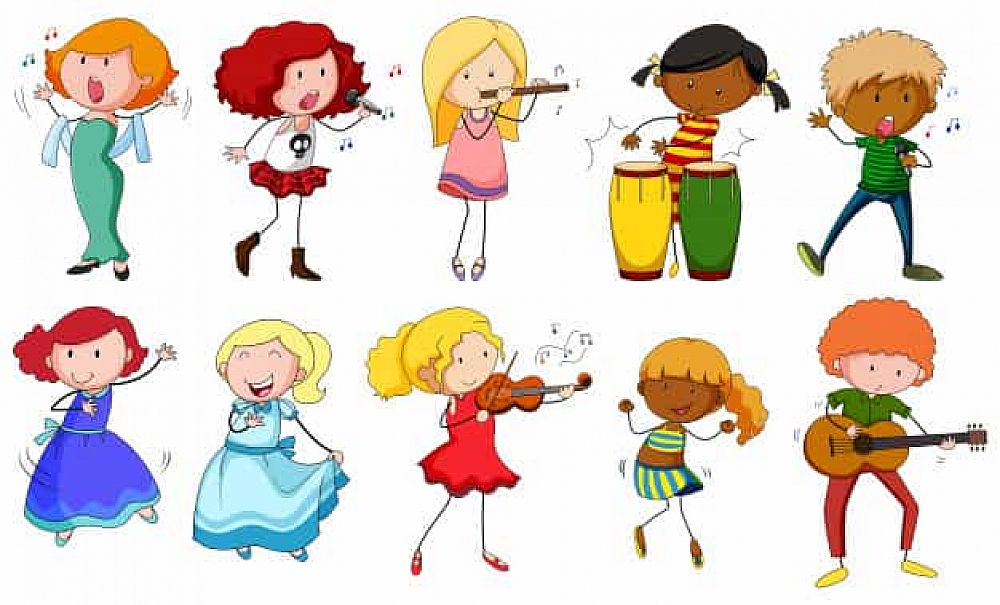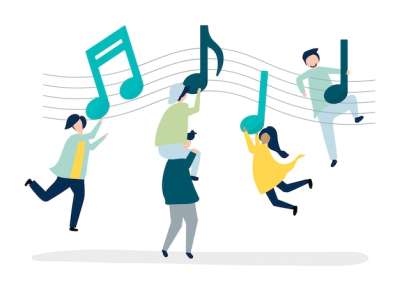Songs In an Early Childhood ESL Classroom

It is a very well known fact that English is a very melodic language, it sounds very soft and children love singing in English. When you keep a certain rhythm, rhyme, and pace, it is very likely to learn faster and better almost any topic.
This post was written by our TEFL certification graduate Valeria T. Please note that this blog post might not necessarily represent the beliefs or opinions of ITTT.
Listen to this blog post:
Young Learners
For a group of very young learners, it is quite a must to use songs, to put the students move and have some action in the classroom as their attention span is quite short and they need entertainment, fun, and playtime.
I will take as an example of body parts. If I were to teach the body parts, I would choose the “Shoulders, knees and toes” song or similar.

Also Read: How long does a TEFL course take?
The objective would be to sing and to touch the body parts at the same time.
The best tip for teaching young learners body parts is lots of action songs where they sing and touch or move the body parts they mention.
- Sing the songs to elicit body parts in other parts of the lesson, e.g. singing “Head shoulders knees and…” and waiting for them to fill in the next word or guess the title
- Drill the body parts before and after you do the song, e.g. shouting out “Right/ left + arm/ leg” at random before or after the Pinocchio song
- Sometimes do the song slowly and acapella
- Change the body parts mentioned in the song
- Use flashcards to elicit the words of the song or change them
- Combine songs with books, songs, and games
Both engage and practice stages are important during the lesson as they will have to be well balanced and guided.
There are many other activities young learners can do based on songs. They can stand in a circle singing and touching the body parts and the student who doesn’t know the body part or makes a mistake (instead of touching his head, he touches his shoulder) will be out of the game until one of them remains and wins the game. They like competitions and they will focus to remain in the circle until the end of the game.

Also Read: Pronunciation Mistakes Made by Russian Speakers
More Ideas
The activities based on songs are very delightful and cheerful and they proved to be a great success every time I used them in class as they are very engaging and meaningful to young learners. A child between 2-4 years old cannot learn better than that. It is very useful when music is accompanied by technology. Children like visual support and the best way are to watch the video and sing along with it.
I truly believe in the power of songs when teaching and learning a foreign language. They warm up the class and change the mood into a better one. Singing a song means music, dance, movement, happiness.
Do you want to teach English abroad? Take a TEFL course today!
The whole strategy is that when singing a song in a foreign language, we do not learn to sing, but we learn new words, vocabulary, pronunciation and of course listening comprehension skills that’s why songs are an important part and play a tremendous role when teaching very young learners a new language.
Apply now & get certified to teach english abroad!
Speak with an ITTT advisor today to put together your personal plan for teaching English abroad!
Send us an email or call us toll-free at 1-800-490-0531 to speak with an ITTT advisor today.
Related Articles:
- 10+ Activities For Teaching English Winter Camp
- Top 10 Things To Know When Moving Abroad To Teach English
- 7 Activities for Teaching Reported Speech in the ESL Classroom
- What TEFL course is most useful?
- Great Ideas for Teaching Listening Skills in the ESL Classroom
- The Best Countries to Teach ESL When You're 50+



